How To Stop Drafts and Save On Home Energy Bills

by
Battic Door Energy Conservation Products
(IC: professional)
Imagine leaving a window open all winter long -- the heat loss,cold drafts and wasted energy! If your home has a folding pull-down atticstair, a whole house
fan, a fireplace or clothes dryer, that may be just what isoccurring in your home every day.
Drafts from these often overlooked holes waste energy and costyou big in the form of higher energy bills. Drafts are the largest source ofheating and cooling loss in the home.
Drafts occur through the small cracks around doors, windows,pipes, etc. Most homeowners are well aware of the benefits that caulk andweatherstripping provide to minimize energy loss and drafts.
But what can you do about drafts from the four largest “holes”in your home -- the folding attic stair, the whole house fan, the fireplace andthe clothes dryer? Here are some tips and techniques that can easily, quicklyand inexpensively seal and insulate these holes.
AtticStairs
When attic stairs are installed, a large hole (approximately 10square feet) is created in your ceiling. The ceiling and insulation that werethere have to be
removed, leaving only a thin, unsealed, sheet of plywood.
Your attic space is ventilated directly to the outdoors. In thewinter, the attic space can be very cold, and in the summer it can be very hot.And what is separating your conditioned house from your unconditioned attic?That thin sheet of plywood.
Often a gap can be observed around the perimeter of the atticdoor. Try this yourself: at night, turn on the attic light and shut the atticstairway door -- do you see any light coming through?
If you do, heated and air-conditioned air is leaking out ofthese large gaps in your home 24-hours a day. This is like leaving a window orskylight open all year ‘round.
An easy, low-cost solution to this problem is to add aninsulated attic stair cover. An attic stair cover seals the stairs, stoppingdrafts and energy loss. Add the desired amount of insulation over the cover torestore the insulation removed from the ceiling.
WholeHouse Fans and Air Conditioning Vents
Much like attic stairs above, when whole house fans areinstalled, a large hole (up to 16 square feet or larger) is created in yourceiling. The ceiling and insulation that were there have to be removed, leavingonly the drafty ceiling shutter between you and the outdoors.
An easy, low-cost solution to this problem is to add a wholehouse fan shutter seal. Made from white textured flexible insulation, theshutter seal is installed over the ceiling shutter, secured with Velcro, andtrimmed to fit. The shutter seal can also be used to seal and insulate airconditioning vents, and is easily removed when desired.
Fireplaces
Over 100 million homes, in North America are constructed withwood or gas burning fireplaces. Unfortunately there are negative side effectsthat the fireplace brings to a home, especially during the winter heatingseason. Fireplaces are energy losers.
Researchers have studied this to determine the amount of heatloss through a fireplace, and the results are amazing. One research studyshowed that an open damper on an unused fireplace in a well-insulated house canraise overall heating-energy consumption by 30 percent.
A recent study showed that for many consumers, their heating billsmay be more than $500 higher per winter due to the drafts and wasted energycaused by fireplaces.
Why does a home with a fireplace have higher energy bills? Yourchimney is an opening that leads directly outdoors -- just like an open window.Even if the damper is shut, it is not airtight.
Glass doors don’t stop the drafts either. The fireplace is likea giant straw sucking your expensive heated or air-conditioned air right out ofyour house!
An easy, low-cost solution to this problem is to add a FireplacePlug to your fireplace. Available from Battic Door, a company known for theirenergy conservation products, the Fireplace Plug is an inflatable pillow thatseals the fireplace damper, eliminating drafts, odors, and noise. The pillow isremoved whenever the fireplace is used, then reinserted after.
ClothesDryer Exhaust Ducts
In many homes, the room with the clothes dryer is the coldestroom in the house. Your clothes dryer is connected to an exhaust duct that isopen to the outdoors. In the winter, cold drafts in through the duct, throughyour dryer and into your house.
Dryer vents use a sheet-metal flapper to try to reduce thesedrafts. This is very primitive technology that does not provide a positive sealto stop the drafts. Compounding the problem is that over time, lint clogs theflapper valve causing it to stay open.
An easy, low-cost solution to this problem is to add a dryervent seal. This will reduce unwanted drafts, and also keeps out pests, bees androdents. The vent will remain closed unless the dryer is in use. When the dryeris in use, a floating shuttle rises to allow warm air, lint and moisture toescape.
For more information on Battic Door’s energy conservationsolutions and products for your home, visit www.batticdoor.com or, to request afree catalog, send a self-addressed stamped envelope to P.O. Box 15, Mansfield,MA 02048.
ABOUT THE AUTHOR
Mark D. Tyrol is a Professional Engineer specializing in cause andorigin of construction defects. He developed several residential energyconservation products including an attic stair cover and an attic access door.Battic Door is the US distributor of the fireplace plug. To learn more visit www.batticdoor.com
fan, a fireplace or clothes dryer, that may be just what isoccurring in your home every day.
Drafts from these often overlooked holes waste energy and costyou big in the form of higher energy bills. Drafts are the largest source ofheating and cooling loss in the home.
Drafts occur through the small cracks around doors, windows,pipes, etc. Most homeowners are well aware of the benefits that caulk andweatherstripping provide to minimize energy loss and drafts.
But what can you do about drafts from the four largest “holes”in your home -- the folding attic stair, the whole house fan, the fireplace andthe clothes dryer? Here are some tips and techniques that can easily, quicklyand inexpensively seal and insulate these holes.
AtticStairs
When attic stairs are installed, a large hole (approximately 10square feet) is created in your ceiling. The ceiling and insulation that werethere have to be
removed, leaving only a thin, unsealed, sheet of plywood.
Your attic space is ventilated directly to the outdoors. In thewinter, the attic space can be very cold, and in the summer it can be very hot.And what is separating your conditioned house from your unconditioned attic?That thin sheet of plywood.
Often a gap can be observed around the perimeter of the atticdoor. Try this yourself: at night, turn on the attic light and shut the atticstairway door -- do you see any light coming through?
If you do, heated and air-conditioned air is leaking out ofthese large gaps in your home 24-hours a day. This is like leaving a window orskylight open all year ‘round.
An easy, low-cost solution to this problem is to add aninsulated attic stair cover. An attic stair cover seals the stairs, stoppingdrafts and energy loss. Add the desired amount of insulation over the cover torestore the insulation removed from the ceiling.
WholeHouse Fans and Air Conditioning Vents
Much like attic stairs above, when whole house fans areinstalled, a large hole (up to 16 square feet or larger) is created in yourceiling. The ceiling and insulation that were there have to be removed, leavingonly the drafty ceiling shutter between you and the outdoors.
An easy, low-cost solution to this problem is to add a wholehouse fan shutter seal. Made from white textured flexible insulation, theshutter seal is installed over the ceiling shutter, secured with Velcro, andtrimmed to fit. The shutter seal can also be used to seal and insulate airconditioning vents, and is easily removed when desired.
Fireplaces
Over 100 million homes, in North America are constructed withwood or gas burning fireplaces. Unfortunately there are negative side effectsthat the fireplace brings to a home, especially during the winter heatingseason. Fireplaces are energy losers.
Researchers have studied this to determine the amount of heatloss through a fireplace, and the results are amazing. One research studyshowed that an open damper on an unused fireplace in a well-insulated house canraise overall heating-energy consumption by 30 percent.
A recent study showed that for many consumers, their heating billsmay be more than $500 higher per winter due to the drafts and wasted energycaused by fireplaces.
Why does a home with a fireplace have higher energy bills? Yourchimney is an opening that leads directly outdoors -- just like an open window.Even if the damper is shut, it is not airtight.
Glass doors don’t stop the drafts either. The fireplace is likea giant straw sucking your expensive heated or air-conditioned air right out ofyour house!
An easy, low-cost solution to this problem is to add a FireplacePlug to your fireplace. Available from Battic Door, a company known for theirenergy conservation products, the Fireplace Plug is an inflatable pillow thatseals the fireplace damper, eliminating drafts, odors, and noise. The pillow isremoved whenever the fireplace is used, then reinserted after.
ClothesDryer Exhaust Ducts
In many homes, the room with the clothes dryer is the coldestroom in the house. Your clothes dryer is connected to an exhaust duct that isopen to the outdoors. In the winter, cold drafts in through the duct, throughyour dryer and into your house.
Dryer vents use a sheet-metal flapper to try to reduce thesedrafts. This is very primitive technology that does not provide a positive sealto stop the drafts. Compounding the problem is that over time, lint clogs theflapper valve causing it to stay open.
An easy, low-cost solution to this problem is to add a dryervent seal. This will reduce unwanted drafts, and also keeps out pests, bees androdents. The vent will remain closed unless the dryer is in use. When the dryeris in use, a floating shuttle rises to allow warm air, lint and moisture toescape.
For more information on Battic Door’s energy conservationsolutions and products for your home, visit www.batticdoor.com or, to request afree catalog, send a self-addressed stamped envelope to P.O. Box 15, Mansfield,MA 02048.
ABOUT THE AUTHOR
Mark D. Tyrol is a Professional Engineer specializing in cause andorigin of construction defects. He developed several residential energyconservation products including an attic stair cover and an attic access door.Battic Door is the US distributor of the fireplace plug. To learn more visit www.batticdoor.com
{
"id": "1533",
"alt": "",
"title": "",
"video_link": "https://www.youtube.com/embed/f49qGEOqCX4",
"youtube_video_id": "f49qGEOqCX4"
}
{
"width": 634,
"height": 357,
"showRelated": true
}
{
"id": "1534",
"alt": "",
"title": "",
"video_link": "https://www.youtube.com/embed/3VihimS8dz8",
"youtube_video_id": "3VihimS8dz8"
}
{
"width": 634,
"height": 357,
"showRelated": true
}
{
"id": "1535",
"alt": "",
"title": "",
"video_link": "https://www.youtube.com/embed/MSKTWc9Lq-c",
"youtube_video_id": "MSKTWc9Lq-c"
}
{
"width": 634,
"height": 357,
"showRelated": true
}
{
"id": "1536",
"alt": "",
"title": "",
"video_link": "https://www.youtube.com/embed/Q17if7kJaOA",
"youtube_video_id": "Q17if7kJaOA"
}
{
"width": 634,
"height": 357,
"showRelated": true
}
{
"id": "1532",
"alt": "",
"title": "",
"video_link": "https://www.youtube.com/embed/WnQ5c-Ytgyc",
"youtube_video_id": "WnQ5c-Ytgyc"
}
{
"width": 634,
"height": 357,
"showRelated": true
}
Enjoyed the project?
Published January 10th, 2014 10:15 AM
Comments
Join the conversation
1 comment
-
Where does one get a fireplace insert such as the one above?
 Michele Duckworth
on Jul 31, 2014
Michele Duckworth
on Jul 31, 2014
-
-
 John White
on May 24, 2019
John White
on May 24, 2019
What a fine piece of article! It helps for the homeowners to optimize their rising energy bills. In summers air conditioner is all we used to stay cool at home or office but if your air conditioner is not energy efficient then it directly impacts on your energy bills. So follow the steps that is stated in the given blog ways to save money on your air conditioner bill.
-




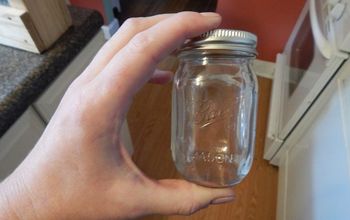




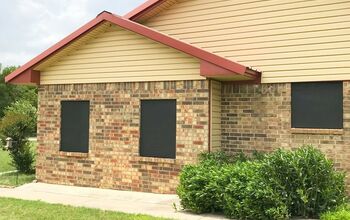








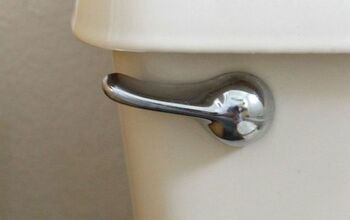


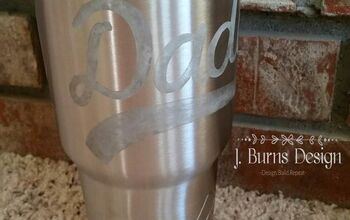


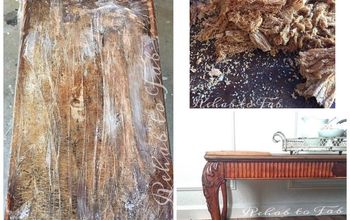


Frequently asked questions
Have a question about this project?